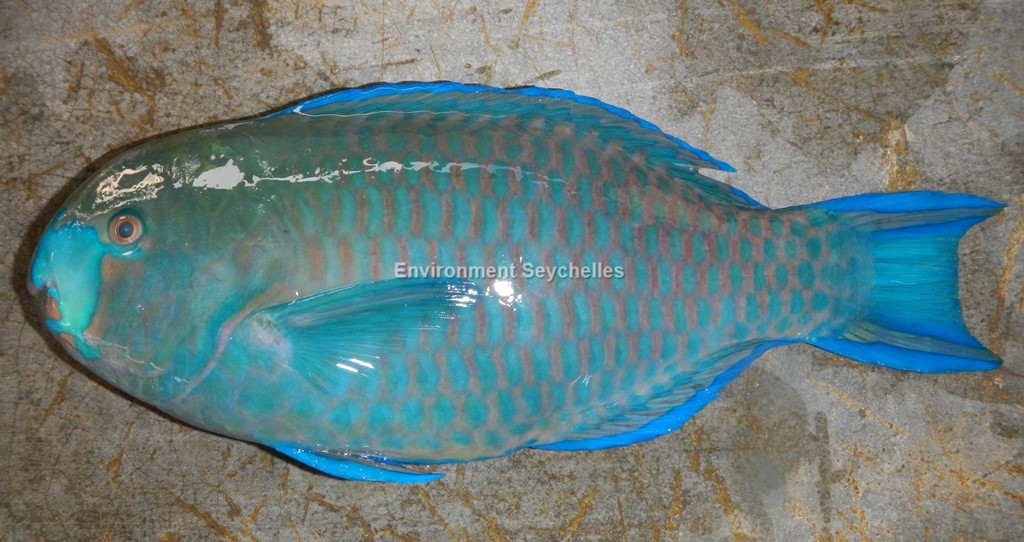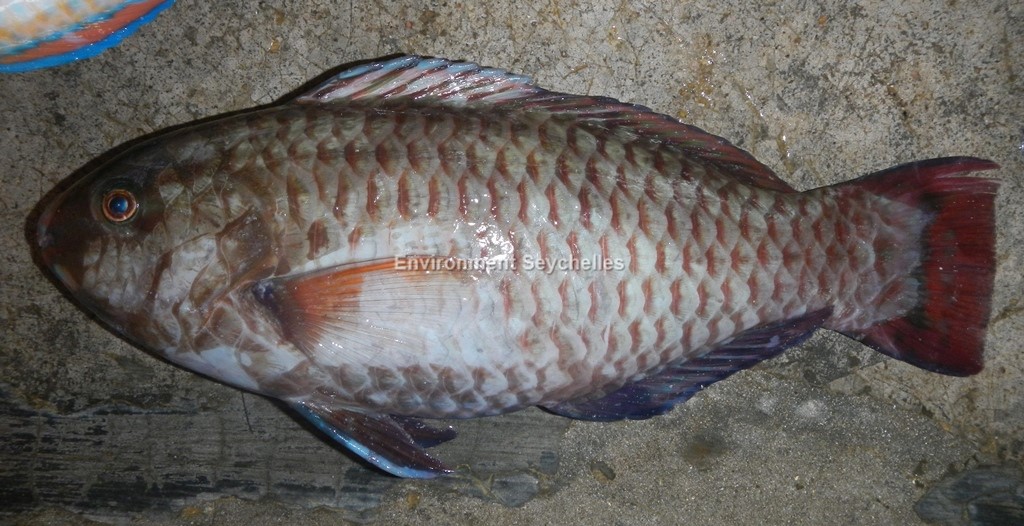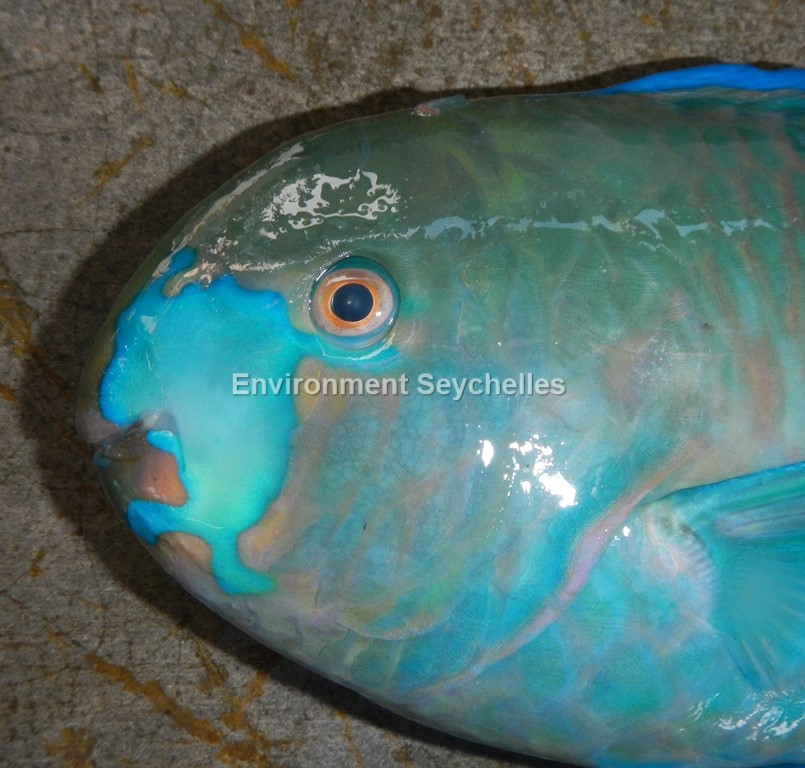Description:
Dorsal Spines: 9; Dorsal rays: 10; Anal spines: 3; Anal rays: 9.
Relatively small, full-bodied parrotfish. Cheek scale rows 3. Lips cover three-fourths to all of dental plates. Initial phase with 0-1 canine teeth
posteriorly on side of upper dental plate and 0-2 on lower; canine teeth better developed on terminal males, 1 or 2 in both jaws. Dental plates white.
Caudal fin truncate in Initial phase and emarginate in Terminal phase.
Initial phase: dark brown, sometimes with 5 faint irregular pale bars, of 1 or 2 vertical scale rows, on body. Head dark reddish to orangish brown, the
red more prominent anteriorly. Iris reddish to orangish. Fins dark reddish to orangish brown, the pectoral membranes pale.
Terminal phase: body green, the scales with pink bar. Head dull green, shading to orangish ventrally, with a large area of brilliant blue-green on side
of snout and anterior cheek in front of orbit that runs under the chin. Front of snout and medial portion of upper lip, chin and most of lower lip
salmon-pink. Iris orange. Dorsal and anal fins green basally with orange stripe above and blue margin. Pectoral fin membranes pale, the rays blue-green
except for a streak of dull orange on fourth to sixth rays. Pelvic fins blue with a streak of orange. Caudal fin blue green, blue lobes with longitudinal
orange-pink bands.
Size:
Maturity: Lm unknown. Range unknown. Max Length: 45 cm TL.
Specimens in Seychelles typically much smaller than the above cited global maximum. A 2019-20 study of the parrotfish fishery recorded largest specimen of
27.5 cm TL (Nevill 2020).
Habitat and Ecology:
Found solitary in shallow water reefs, reef flats, fronts and rocky shores (depth 1-15 m). Feeds on benthic algae. Oviparous, distinct pairing during breeding.
Fishery Status:
This species is not protected or subject to fishery regulations. It is caught in the fish trap fishery, where it is an occasional and generally scarce
component of the catch.
Notes:
References:
Allen, G. (2012). Scarus viridifucatus. The IUCN Red List 2012: http://dx.doi.org/10.2305/IUCN.UK.2012.RLTS.T154971A17900949.en. (01/04/19).
Bray, D.J. (2018). Scarus viridifucatus in Fishes of Australia, http://fishesofaustralia.net.au/home/species/5019 (01/04/19).
Froese, R. & D. Pauly. (Eds.) (2019). FishBase. https://www.fishbase.se/summary/7914 (01/04/19).
Nevill, J.E.G. (2020). Assessment and Valuation of the Parrotfish Fishery to Support an Ecosystem Approach to Fisheries. Project Report.
Randall, J.E. & Bruce, R.W. (1983). The Parrotfishes of the Subfamily Scarinae of the Western Indian Ocean with Descriptions of Three New species.
Ichthyological Bulletin of the J.L.B. Smith Institute of Ichthyology. Number 47 March1983 ISSN: 0073-4381
Citation:
Nevill, J.E.G. (2019). Scarus viridifucatus, Roundhead parrotfish. Seychelles Seatizens. www.seatizens.sc. https://seatizens.sc/species/scarus-viridifucatus-smith-1956/ (updated 23/08/22).




There are no comments